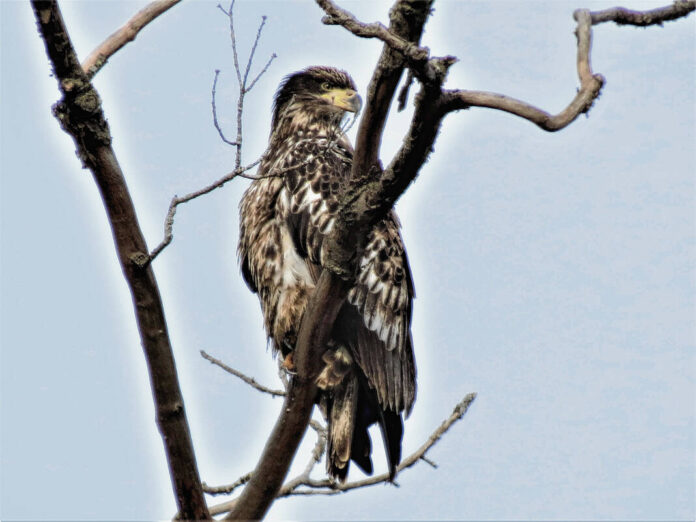Big Oaks National Wildlife Refuge is calling on Hoosier volunteer birders and nature enthusiasts to participate in the Audubon Society’s longest-running wintertime tradition, the annual Christmas Bird Count.
The Big Oaks count take place Saturday, Dec. 17, and volunteer birders of all skill levels are needed. They may sign up to count birds for a half-day (sunup to noon, or noon to sunset) or all day. Volunteers and staff will meet at 8 a.m. at the Big Oaks NWR office, 1661 W. Jpg Niblo Road in Madison.
The nonprofit Big Oaks Conservation Society will provide lunch for volunteers at the refuge office. If you are interested in participating in the Big Oaks NWR count, preregister with the refuge at 812-273-0783. Weather for the Christmas bird count can vary, but warm and/or waterproof clothing is recommended.
Apart from its attraction as a social and competitive event, the annual count reveals valuable scientific data. Each count group completes a census of the birds found during one 24-hour period between December 14 and January 5 in a designated circle 15 miles in diameter — about 177 square miles. Now in its 123rd year, the Christmas Bird Count is larger than ever with more than 2,000 individual counts scheduled, expanding its geographical range and accumulating information about the winter distributions of various birds. It is vital in monitoring the status of resident and migratory birds across the Western Hemisphere. The data, 100% volunteer generated, have become a crucial part of the U. S. Government’s natural history monitoring database. Count results from 1900 to the present are available through Audubon’s website: audubon.org/conservation/science/christmas-bird-count.
Big Oaks NWR consists of 50,000 acres on the former Jefferson Proving Ground (JPG) located in Jennings, Ripley, and Jefferson Counties in southeastern Indiana. The local refuge is managed by the U.S. Fish and Wildlife Service and provides public use opportunities such as hunting, fishing, wildlife observation, photography, interpretation and environmental education. The refuge has one of the largest contiguous forest blocks in southeastern Indiana as well as one of the largest grassland complexes; both provide wonderful wildlife viewing opportunities for refuge visitors. Information about the refuge is available at fws.gov/refuge/big_oaks/.





